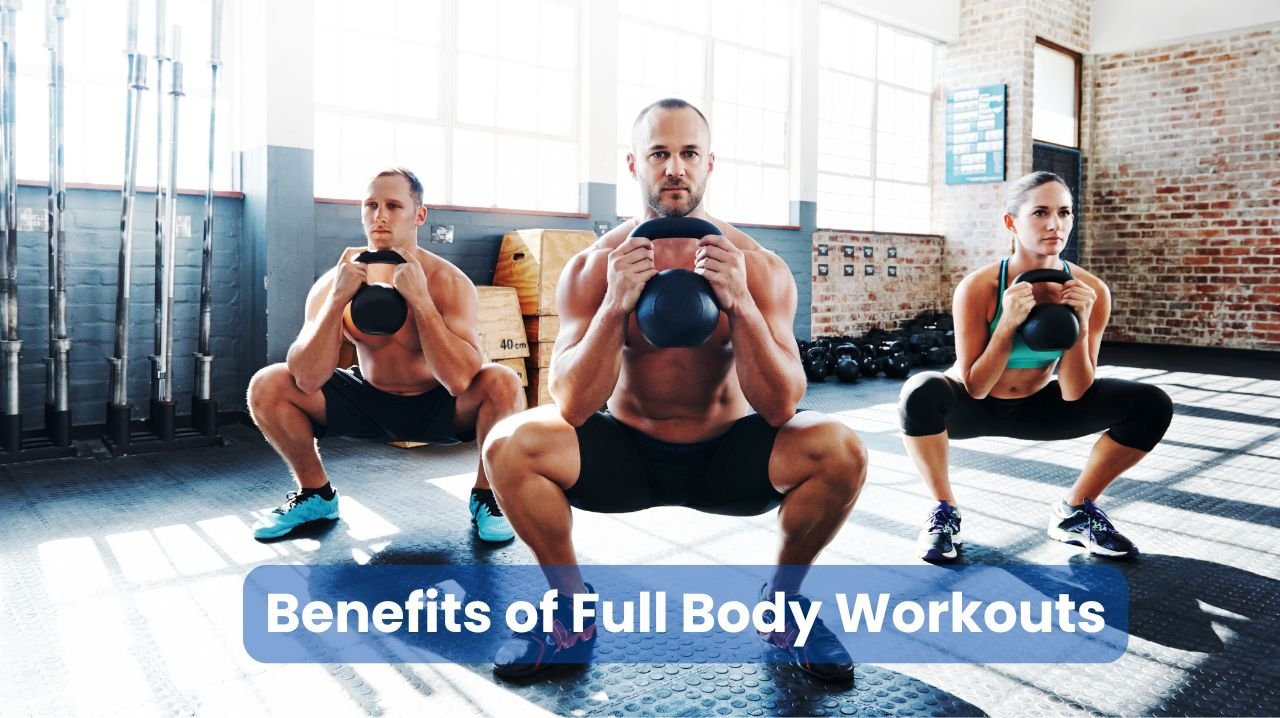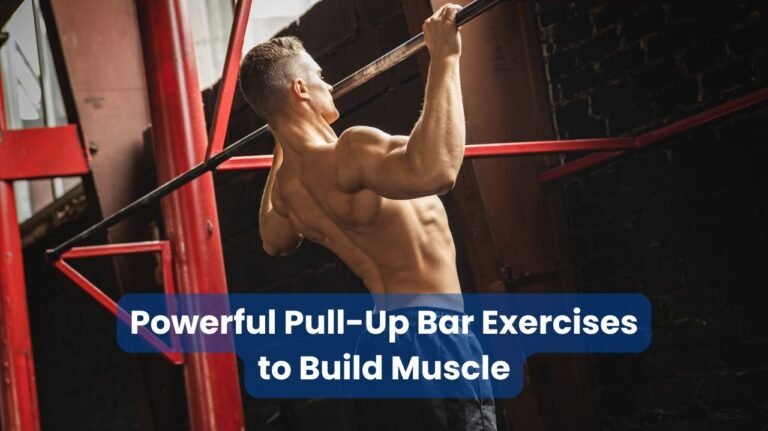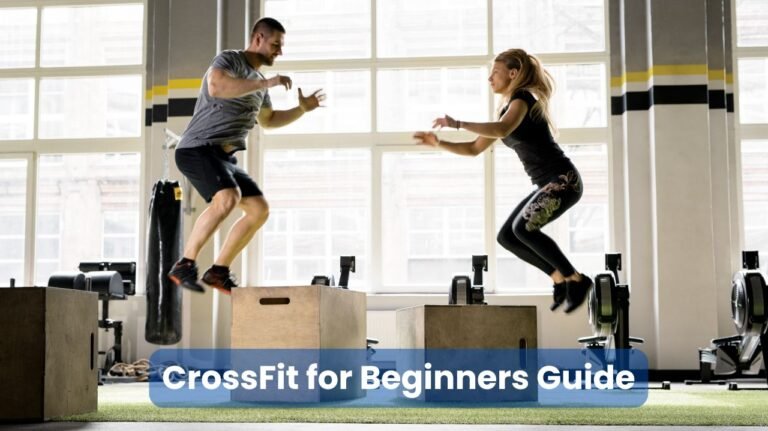The Comprehensive Benefits of Full Body Workouts
As fitness enthusiasts increasingly seek efficient and effective workout routines, full body workouts have emerged as a powerful approach to achieving overall fitness goals.
This comprehensive guide explores the numerous advantages of full body training and how it can transform your fitness journey.
👉 Boost in Focus and Energy to Help Increase Pumps and Performance
👉 Increase Gains, Promote Muscle Growth and Boost Energy
👉 Powerful Muscle Growth, Increased Blood Flow, and Enhanced Pumps
👉 Bulk-Up, Increase Gains, And Improve Recovery
What Are Full Body Workouts?
Full body workouts are exercise routines that target all major muscle groups in a single session. Unlike split routines that focus on specific body parts each day, these workouts engage multiple muscle groups simultaneously, providing a comprehensive training approach that mirrors real-life movements.
Key Components of a Full Body Workout
- Compound exercises (multi-joint movements)
- Functional movement patterns
- Progressive overload principles
- Balance between pushing and pulling exercises
- Core engagement throughout movements
Major Benefits of Full Body Training
Time Efficiency
One of the most significant advantages of full body workouts is their time-efficient nature. Instead of spending hours at the gym multiple days per week, you can achieve remarkable results with just 3-4 weekly sessions. This efficiency stems from:
- Maximum muscle engagement per session
- Reduced total gym time needed
- Better workout adherence due to manageable time commitment
- More recovery time between sessions
- Flexibility in scheduling workouts
Enhanced Fat Loss
Full body workouts are particularly effective for fat loss due to their metabolic impact. By engaging multiple muscle groups simultaneously, these workouts:
- Increase caloric burn during exercise
- Elevate post-workout metabolism (EPOC)
- Improve insulin sensitivity
- Enhance fat oxidation
- Promote better hormone balance
Improved Functional Fitness
By incorporating movements that engage multiple muscle groups, full body workouts enhance functional fitness, making daily activities easier and reducing injury risk.
Balanced Muscle Development
Full body training promotes proportional muscle development and prevents common imbalances often seen with split routines.
Comparing Training Approaches
Here’s how full body workouts stack up against other popular training methods:
| Training Style | Frequency | Time Per Session | Recovery Needed | Suitable For |
|---|---|---|---|---|
| Full Body | 3-4x/week | 45-75 mins | 48 hours | All levels |
| Split Routine | 4-6x/week | 60-90 mins | 24-48 hours | Intermediate/Advanced |
| Upper/Lower | 4x/week | 60 mins | 24 hours | All levels |
Scientific Evidence Supporting Full Body Workouts
Research has consistently shown the effectiveness of full body training for various fitness goals. Studies indicate that:
Hormonal Benefits
- Increased growth hormone production
- Better testosterone response
- Improved cortisol management
- Enhanced insulin sensitivity
Metabolic Advantages
- Higher EPOC (Excess Post-exercise Oxygen Consumption)
- Improved mitochondrial density
- Better glucose utilization
- Enhanced fat oxidation capacity
How to Structure a Full Body Workout
Essential Movement Patterns
A well-designed full body workout should include:
- Push exercises (horizontal and vertical)
- Pull exercises (horizontal and vertical)
- Hip hinge movements
- Squat variations
- Core stabilization exercises
- Rotational movements
Sample Exercise Selection
Upper Body Push
- Push-ups
- Bench press
- Overhead press
- Dips
Upper Body Pull
- Pull-ups/chin-ups
- Rows
- Face pulls
- Lat pulldowns
Lower Body
- Squats
- Deadlifts
- Lunges
- Step-ups
Recovery and Progress
Optimal Recovery Strategies
To maximize the benefits of full body workouts, proper recovery is essential:
- Get adequate sleep (7-9 hours)
- Stay hydrated throughout the day
- Consume sufficient protein
- Practice stress management
- Include active recovery activities
Progress Tracking
Monitor your progress through:
- Strength improvements
- Body composition changes
- Workout performance metrics
- Recovery quality
- Energy levels
Common Mistakes to Avoid
Training Pitfalls
- Insufficient rest between sessions
- Poor exercise selection
- Inadequate progression
- Neglecting proper form
- Overemphasizing certain movement patterns
Who Should Consider Full Body Workouts?
Full body workouts are particularly beneficial for:
- Busy professionals with limited time
- Beginners starting their fitness journey
- Athletes seeking functional strength
- Those focused on fat loss
- People wanting sustainable fitness routines
Long-term Sustainability
Advantages for Ongoing Fitness
Full body workouts offer several benefits for long-term fitness success:
- Better adherence rates
- Reduced burnout risk
- More flexible scheduling
- Sustainable progress
- Lower injury rates
👉 Pack On Muscle Mass and Get Bigger and Stronger
👉 Burn Fat and Get Seriously Ripped
👉 Get Explosive Strength and Maximum Stamina
👉 Become A Gym Beast With Legal SARMs Alternatives
Conclusion
Full body workouts represent a time-efficient, effective, and scientifically-supported approach to fitness training. By engaging multiple muscle groups simultaneously, they offer numerous benefits ranging from improved fat loss to enhanced functional fitness.
Whether you’re a busy professional, a fitness enthusiast, or someone just starting their fitness journey, full body workouts can provide an excellent foundation for achieving your health and fitness goals.
Remember that success with full body workouts, like any training program, requires consistency, proper form, and appropriate progression. By understanding and implementing the principles outlined in this guide, you can maximize the benefits of this comprehensive training approach and achieve your desired fitness outcomes.







